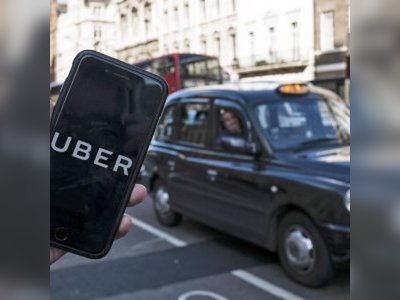Exhibition of Banksy street art opens in Hong Kong, and his anti-police message should strike a chord
“Banksy: Genius or Vandal?”, an exhibition which opened in Hong Kong last week, is dedicated to one of the most popular artists of our time – and staged without his knowledge.
Banksy hasn’t authorised any previous exhibitions dedicated to his work. This is a travelling exhibition which has been visited by more than 700,000 people in Moscow, Saint Petersburg, Madrid, and Lisbon since the summer of 2018.
It was brought to the street artist’s attention by someone who saw a sign for the show in Moscow in August 2018 and sent him a picture, along with a message saying: “They’re charging £20 to get in”. To which his response was: “You know it’s got nothing to do with me right? I don’t charge people to see my work unless there’s a fairground wheel.”
On his banksy.co.uk website, there is a list of all unauthorised exhibitions around the world (including ones titled “Genius or Vandal?”; the Hong Kong is not listed, at least for now), accompanied by a message which reads: “Members of the public should be aware there has been a recent spate of Banksy exhibitions, none of which are consensual. They've been organised entirely without the artist's knowledge or involvement. Please treat them accordingly.”
Visitors who enter the Hong Kong edition of “Genius or Vandal?” first see a large three-screen video installation (evidently not made by Banksy) documenting his street art around the world. Context is perhaps unintentionally emphasised right off the bat.
A common criticism of street art exhibitions is that the genre should not be exhibited indoors. The video only reinforces the fact that Banksy is a street artist – and that the streets are where and how his works should ideally be viewed.
Site specificity is inherent in, and integral to, each and every one of his works. His most recent piece, for instance, A Scar of Bethlehem, was just unveiled on December 21 at Hotel Walled Off in Bethlehem, a nativity scene of sorts featuring Baby Jesus, Mary and Joseph against the Israeli wall of separation in the occupied West Bank.
Event space Portal 6311 in a building in Kowloon Bay, East Kowloon, has considerably more space than other Hong Kong venues – 15,000 square feet (1,400 square metres) – yet the exhibition feels somewhat claustrophobic thanks to its multiple rooms through which visitors must wind to see the 70-plus works on show.
The art is reflective of Banksy’s political, anti-establishment and anti-authoritarian work; several pieces depict the police in a negative light. Now more than ever, its tone should resonate strongly with a large section of the Hong Kong public.
The majority of the works on show are prints, all on loan from private collections and largely acquired on the secondary market (through auctions, for instance), although some were bought from Banksy’s official website, Pest Control. Pest Control is the only place to buy and authenticate new works by the artist.
With standard-price tickets going for HK$180 (US$23) on weekdays and HK$210 on weekends, the commercial nature of the exhibition is evident. That applies to the way it is curated too. “You must exit through the gift shop” is a directive visible at almost every turn the visitor makes while manoeuvring through the show, in case you feel like spending more money. (None of the works on show here are for sale.)
Organised by Art Projectors Hong Kong and Last Bullet Productions (who, to their credit, admit that the show is unauthorised), “Genius or Vandal?” is most certainly targeting Banksy fans as well as the masses who are fascinated by his subversive, enigmatic, and somewhat sensationalised work.
Exhibition producer Alexander Nachkebiya says: “Banksy acquired a status of a phenomenon and is one of the most brilliant and important artists of our time. His work is a challenge to the system, it is a protest, a disobedience to law, a mystery, and a very well-built global brand …”
Bansky, as idealistic and adamant as he might be in his opposition to the commercialisation of his art, has undoubtedly benefited from the exposure and coverage the touring show has received. He does still make a living through selling books and works via Pest Control (though new works are hardly ever available).
Is it fair for others to capitalise on the success of his “global brand”? Most would probably agree that this is questionable – how can the creator of the work have no say in how, where, or when his work is displayed?
However, it isn’t illegal – and that highlights a crude reality of the art world. Only if the artist is prepared to take legal steps to control the resale of his future works can significant hurdles to the staging of such exhibitions be raised.

















